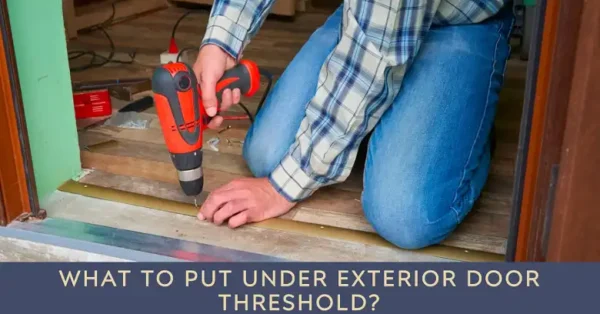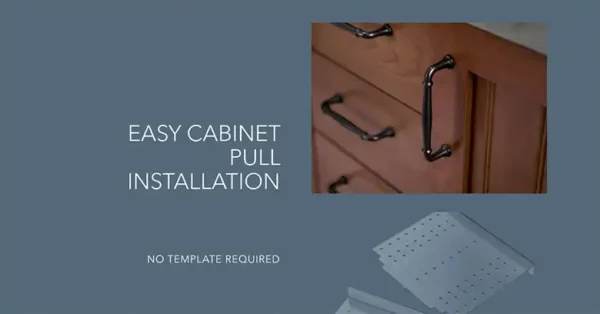An exterior door threshold is more than just a strip of material at the bottom of your entry door. It plays a vital role in weatherproofing, insulation, structural support, and aesthetics. One of the most common homeowner questions is: “What should I put under an exterior door threshold?” This guide answers that question in detail, exploring materials, installation techniques, mistakes to avoid, and professional recommendations. Designed as a 5,000-word in-depth blog article, it ensures you understand every aspect of threshold installation and maintenance.
Quick Answer
The best material to put under an exterior door threshold is a weather-resistant, supportive base such as:
- Pressure-treated wood (traditional but prone to rot over time).
- PVC or composite sill support (long-lasting, rot-resistant).
- Concrete or mortar bed (stable for masonry openings).
- Flashing tape and waterproof caulk (moisture barrier).
The exact choice depends on your door type, home design, and climate.
Why the Base of a Door Threshold Matters
- Moisture Resistance – Prevents water intrusion that leads to rot and mold.
- Structural Support – Provides a stable, level foundation for the door frame.
- Energy Efficiency – Helps seal gaps, keeping conditioned air inside.
- Longevity – Extends the life of the threshold and door.
- Pest Prevention – Blocks insects and rodents from entering.
Common Materials Used Under Exterior Door Thresholds
1. Pressure-Treated Lumber
- Traditional choice.
- Readily available and affordable.
- Must be sealed properly to avoid moisture damage.
- Can warp over time if exposed to water.
2. PVC/Composite Sill Support
- Won’t rot, warp, or attract termites.
- Excellent for humid or wet climates.
- Often used in modern entry systems.
3. Concrete or Mortar Bed
- Best for masonry installations.
- Extremely durable and moisture-resistant.
- Requires skill to level properly.
4. Metal Threshold Plates
- Sometimes installed directly on concrete.
- Must be sealed with caulk to prevent water intrusion.
5. Flashing Tape & Sealant
- Essential moisture barrier.
- Applied under and around the threshold.
- Works with other base materials.
Step-by-Step Installation Guide
Step 1: Prepare the Subfloor or Concrete
- Ensure the surface is level and clean.
- Remove old caulk, adhesive, and rotten wood.
Step 2: Apply Flashing Tape
- Cover the sill area with waterproof flashing tape.
- Extend it slightly up the door jambs.
Step 3: Choose the Right Base Material
- Wood (sealed), PVC, or composite.
- For concrete openings, apply a mortar bed if needed.
Step 4: Apply Bead of Sealant
- Use high-quality exterior caulk.
- Create continuous beads under and around threshold edges.
Step 5: Install Threshold
- Set threshold on the prepared base.
- Check level before fastening.
Step 6: Secure and Seal
- Screw into place (pre-drill if necessary).
- Seal screw holes and edges with caulk.
Mistakes to Avoid
- Skipping flashing tape – invites leaks.
- Using untreated wood – leads to rot.
- Uneven base surface – causes door misalignment.
- Not sealing edges – allows water infiltration.
- Overtightening screws – warps threshold.
Professional Tips
- Always slope threshold slightly outward (1–2°) for drainage.
- Use composite sill supports in wet climates.
- Apply expanding foam sparingly under jambs (never under threshold).
- Re-caulk joints every few years for maximum waterproofing.
- Consider pre-hung entry systems with integral sill pans.
FAQs
Q: Can I put a threshold directly on concrete?
Yes, but you must use flashing tape and caulk to prevent leaks.
Q: Should I use pressure-treated wood under my threshold?
It’s acceptable but less durable than PVC/composite options.
Q: Do I need to insulate under a threshold?
Insulating foam or sill pans can improve energy efficiency.
Q: How long does a properly installed threshold last?
With correct materials, 15–30 years.
Conclusion
What you put under an exterior door threshold determines whether your entryway lasts for decades or fails in a few years. The safest choice is a PVC/composite sill support with flashing tape and high-quality caulk, though pressure-treated wood or concrete are also viable. Proper preparation, sealing, and maintenance are the keys to a long-lasting, weatherproof threshold.




